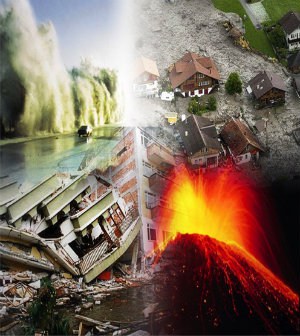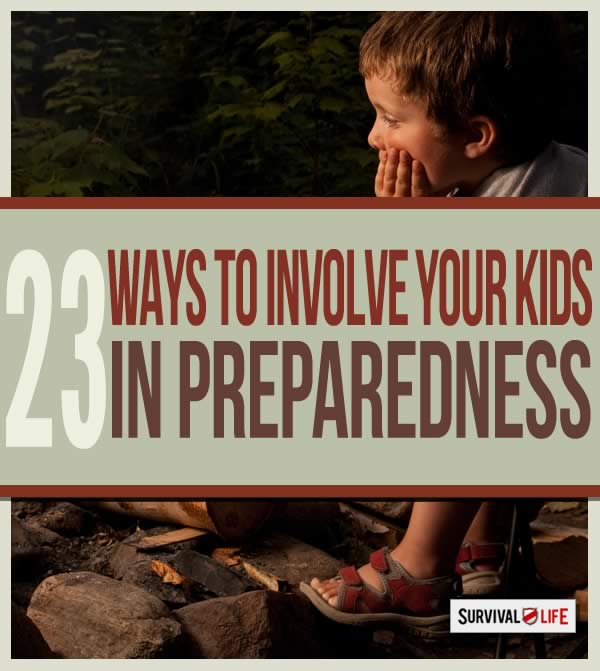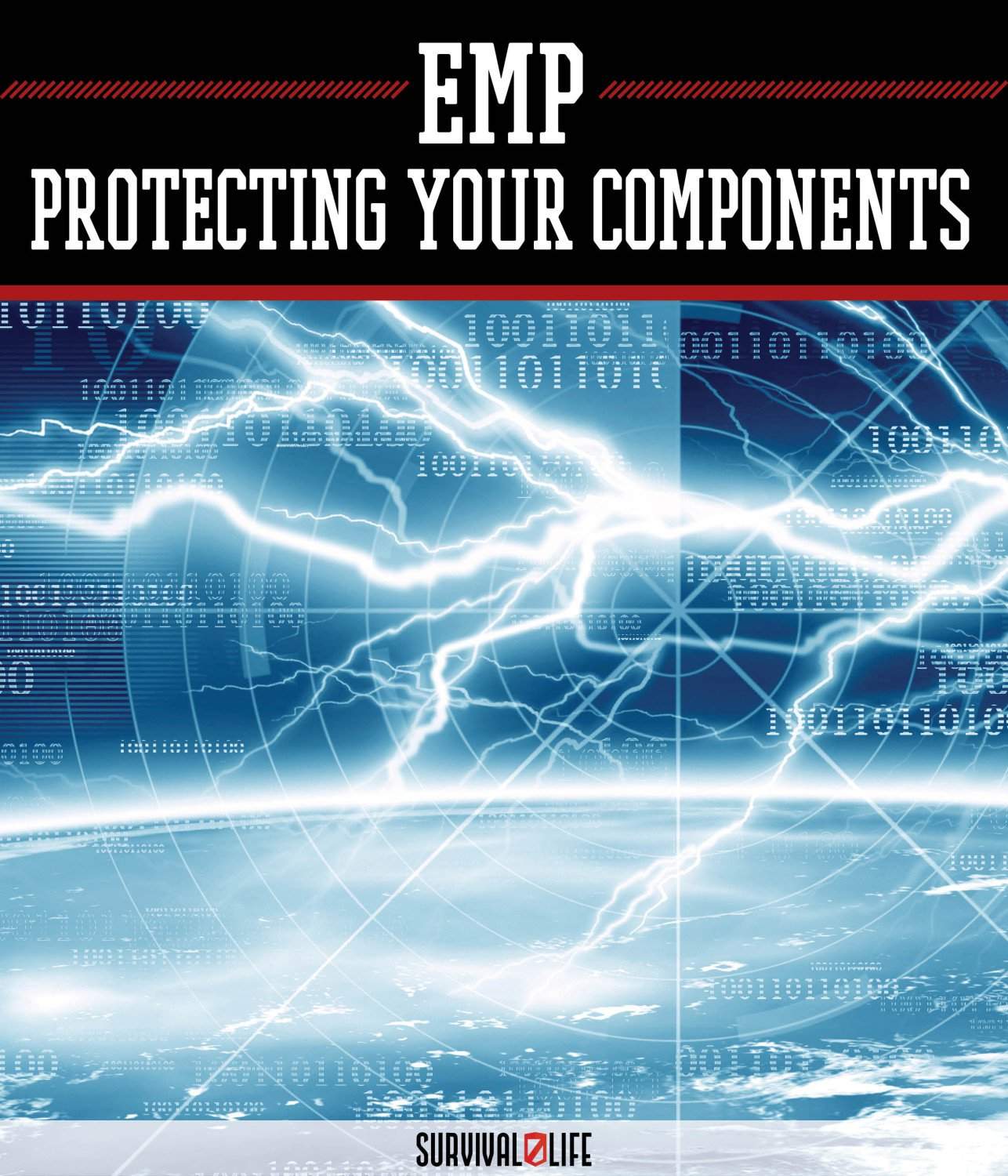Do It Yourself
Performing Your Survival Risk Analysis

This is called Risk Analysis. Risk analysis is the method of knowing what is likely to happen to you based on where you live, your terrain, environment, people in your locale and more. There are a few simple rules to keep in mind when performing risk analysis in order to determine your most likely prep:
- Location
“Location, location, location” is the key here. The important thing to keep in mind, with the U.S anyway, is that if you live in the following areas, you will likely experience the related disasters:
West
The western part of the United States is known for earthquakes and fires. You should be thinking about how you can prepare for both of these events. Understand how earthquakes and fires work and how they interact with various structures and environments.
East
You should be preparing for hurricanes and snow storms. You must be willing to leave at a moments notice in the event that a hurricane is about to hit your area. Snow storms can often trap people in their homes for days, especially on the East coast.
South

In the South, you should be prepared for potential hurricanes (depending on where you live in the South) fires and tornadoes.
The recent tornadoes in Oklahoma should teach us that prepping and survival is not a one time event. It is 24/7/365. We must always be prepared for anything, anytime and anywhere.
North
In the northern part of the United States, you should be prepared for extreme cold and snow storms. The cold environment should be taken into account, and being prepared to have a quantity of goods you keep you alive for a long duration, should be taken under consideration.
- Environment
Your environment says it all. If you live in a rural area, your biggest threat may not be terrorism directly, but rather the fallout of terrorism. In a rural area, you have to keep in-mind that in the midst of a crisis, your area will be one of the very last to receive goods and services. This means your preps should always be large in quantity.
FEMA originally made it clear that you should have at least 72 hours worth of emergency food, water and materials on-hand in the event of a disaster or other emergency. After Hurricane Katrina, they increase this to 10 days. Now they are recommending that you stock up on 3 weeks worth of emergency goods. In a rural area, you should triple this number and triple the amount of people you store it for, as well.
This may seem like overkill at first, but anyone stuck in an emergency has never said “I was over-prepared and had ‘too’ many emergency supplies”. It is better to be safe than sorry.
When performing risk analysis, keep in-mind that terrorism is always a threat, whether foreign or domestic (civilian or government) in all locations. You may or may not be a direct threat, but you may indirectly feel the effects of terrorism.
You should always consider past event when it comes to natural disasters. Has your area had a history of experiencing floods? Fires? Hurricanes? Earthquakes? Storms?
Regardless of the event, you should perform a risk analysis and decide on a plan of action. On the TV show “Doomsday Preppers”, the number one thing they fail at (most anyway) is risk analysis. Many on that show are preparing for some of the most random events that they were scared of on the news that will likely never affect them, which is why they are put on television, to show them as an extreme example in order to build their audience.
Do not fail at risk analysis. Risk analysis, if done effectively, is just as vital as preparing itself. If you do not know what to prepare for, or you prepare for the wrong type of event, you could be wasting time, money and other precious resources planning and preparing to survive an event that will likely never happen to you based on the variables above.
Click here for the original article.
Give us your thoughts! How do “you” perform risk analysis?
Drop a comment below and let us know.
Natural Disasters Risk List | Worst Natural Disasters Locations
Natural Disaster: Surviving Mother Nature’s Fury
7 Apps That Will Guide You Through A Natural Disaster
-

 Do It Yourself7 months ago
Do It Yourself7 months agoParacord Projects | 36 Cool Paracord Ideas For Your Paracord Survival Projects
-

 Do It Yourself9 months ago
Do It Yourself9 months agoHow To Make Paracord Survival Bracelets | DIY Survival Prepping
-

 Do It Yourself9 months ago
Do It Yourself9 months ago21 Home Remedies For Toothache Pain Relief
-

 Do It Yourself10 months ago
Do It Yourself10 months agoSurvival DIY: How To Melt Aluminum Cans For Casting
-

 Exports8 months ago
Exports8 months agoAre Switchblades Legal? Knife Laws By State









Straight Forward Prepper
July 22, 2013 at 4:24 AM
Thanks again for re-posting one of our articles! We are happy to be partnered with Survival Life and appreciate the exposure on your site.
Take care,
Straight Forward Prepper aka Matt
Dave
July 22, 2013 at 8:52 AM
Threat analysis:
1 – location – New River Valley, rural, inland, mid-lantic; threats: major = lost goods & services, minor = weather extremes. No threat of floods, wildfires, mud/land-slides, etc., at this location.
Preparations:
Emergency Goods
a – storage system for foods (canned, dried, mres, bulk ingredients like salt, sugar, flours, spices), first-aid supplies, with computerized inventory management & rotation schedule (for 6 months plus).
FWIW, we run a licensed home bakery, so we always have an ample supply of fresh bulk flour. Being self-employed, or at least able to provide a necessary product and/or service to your neighborhood, could be a significant benefit in hard times.
b – fresh food production capability: 1/4 acre kitchen garden, orchard, berry patch, etc., chickens, beehives.
c – food preservation equipment & supplies
Emergency Services:
a – 1100 gallon rainwater storage, 60 psi pump
b – 4.2 KW solar electric system (BP solar panels plus Xantrex/Schneider Electric charge controllers and inverter) provides 240v split phase, entire home runs off-grid 24×7. Batteries hold about 45 KWH, and usually reach full charge by 10 AM. Also, 5 KW gas backup generator for emergency system maintenance, as well as some spares (solar panels, controllers & inverter).
c – security – several safe rooms and a good supply of rifles, shotguns, handguns, ammo, the skills to use them effectively, and to teach others to do so – I’m a former Deputy Sheriff & certified firearms instructor.
d – 4wd SUV, trailer, go-bags, etc., though flight from this “homestead” would be an absolute last resort.
e – commercial snow-blower,
f – 100 gallons of gasoline stored
g – 2 years worth of garden supplies stored
h – numerous strategically placed dry-chemical fire extinguishers
This took, and will continue to take, a lot of time, effort and expense, but I think these preparations are relatively cheap insurance, considering the alternatives!
Many thanks to SurvivalLife.com for helping to spread the word, and helping to bring folks up to speed on these matters.
Dave
July 22, 2013 at 1:57 PM
Upon reading my previous post, I realized that I had left out some important self-sufficiency resources acquired well before the current perceived need for “prepping”:
winter heat: plan A: natural main gas furnace, plan B: several propane stoves & enough stored propane for at least one harsh winter, plan C: wood-stove capable of heating the entire house by convection, & enough cut/split firewood for at least one harsh winter.
skills & tools: basic carpentry & metal working, plumbing (Cu/soldering,PEX), hard/silver soldering, brazing & welding (gas, stick & MIG/TIG), auto & small engine maintenance, mechanical engineering, computer software engineering (i.e. designing and programming/implementing solutions, not just “using” applications, with a focus on Open-Source software), basic electronics, basic gunsmithing, ammo reloading, bullet casting, basic chemistry (e.g. sufficient to determine & control pH & brix in home-made preserves, and the percent acetic acid in home-made vinegar)
Of course computers & power tools can only make many tasks easier if you have the renewable and/or home-made resources to power them!
As with many things in life, the most important aspects are: practical planning, proper prioritization and follow-thru!
Planning and prioritization are important, but a great plan will not feed you and your family, nor will it light the lights or keep you warm (for long), so ya gotta DO IT or they ain’t worth squat!
Stay safe…
Dave
Ellen
July 23, 2013 at 12:47 AM
My first concern is the shut down of our banking system.
No credit cards, no debit cards, no food stamp cards.
What happens to our direct deposit paychecks?
Second concern is people fleeing the big cities because
of rioting. I live one and a half hours from Nashville,
two hours from Knoxville and one and a half hours from
Chattanooga. We would take a hit from all three cities.
People fleeing in a panic with no plans except to get out
of the big cities. No place to go and probably little or
no cash. No food, no water and no shelter. Scary!!!
Third concern would be a earthquake …the New Madrid faultline.
You have to cross the Caney Fork river five times to get to
Nashville…….you better know the back country roads.
chris g.
July 23, 2013 at 7:15 AM
Ellen, If there were a significant enough earthquake to cause rioting and mass exodus from Nashville, would all of your 5 bridges, or even most, be intact? I’m thinking if the river is wide enough, fast moving enough….the un-bridged river would be your impediment to the unruly hoards. Obviously, it would also be an impediment to your movements…
..I too, am concerned about my ability to access my banked funds. In a total SHTF scenario how important would Federal paper be? In a natural disaster, I’m thinking any creditors may be sympathetic, (by nature or political force, I don’t know) until things return to “normal”
We have no major bridges, mountains or other natural “road blocks” between our little farm and the hoards of Atlanta. But we do have good neighbors, strong fences- for livestock not vehicle resistant, and the ability to stash an unusually high amount of resources, in unassuming places!
ChristyK
July 28, 2013 at 9:58 PM
When prepping you are best off seeing what needs you can have for every disaster. Whether there is a winter storm, a hurricane, flood, or you just lose your job, you need food, water, shelter, energy (cooking & heat for winter), medical care, defense. If you take care of these areas you should be in decent shape for most disasters whether personal, local, national, or worldwide. If your area is particularly prone for one kind of a disaster you can work a little harder for that one thing, but taking care of all of the basic needs will prepare you for most things.